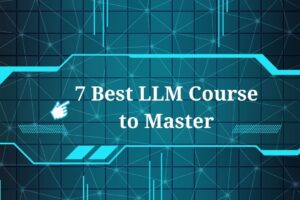
Smarter Ways to Outsource eLearning Outsourcing Content Development
Outsourcing eLearning content can be one of the most effective ways to scale your training programmes, without burning out your internal team. Whether you’re facing tight deadlines, limited resources, or skill gaps, the decision to partner with an external provider should be strategic, not reactive. The elearning industry is evolving rapidly, and organisations must keep pace with new trends and standards to remain competitive.
The benefits of outsourcing elearning include cost savings, increased efficiency, and access to specialised expertise, making it an attractive option for many organisations.
In this guide, we’ll explore when outsourcing makes sense, how to make it successful, what to look for in a partner, the different outsourcing models that work for modern organisations, and how to choose the right elearning solutions for your needs.
1. Why Organisations Choose to Outsource eLearning
Outsourcing is no longer viewed as a workaround, it’s a smart business decision. More L&D teams are being asked to deliver more training, faster, and with fewer internal resources. When done well, outsourcing gives you access to a full team of experts, without the long-term cost of hiring them. Cost savings are a major driver for organisations, as outsourcing reduces overhead, labour, and infrastructure expenses. Other key drivers include technological advancements and innovation in content development, which have significantly contributed to the growth and success of the eLearning industry.
Here’s why organisations outsource eLearning:
- Scale rapidly without hiring – Tackle large projects or multiple modules at once
- Fill skill gaps – Access instructional designers, graphic designers, animators, developers, accessibility experts, or complement or replace your internal development team
- Respond to change – Quickly roll out training when compliance laws change or new systems are launched
- Modernise legacy content – Refresh outdated training into mobile-friendly, interactive modules
- Gain fresh perspective – Outside experts can help clarify learning outcomes, engagement methods, and learner needs
- Key benefits – Improve efficiency, reduce costs, accelerate project timelines, and align training with organisational goals
It’s also an opportunity to build and own your own content library rather than paying ongoing licensing fees for generic off-the-shelf content that may not reflect your organisation’s tone, culture, or procedures. By investing in custom development, you create training that’s reusable, editable, and fully aligned to your needs without being locked into a subscription model. This makes outsourcing a smarter long-term strategy, especially for organisations building their own scalable, branded learning ecosystem.
Before deciding what to outsource, it’s important to evaluate your organisation’s core competencies to determine which areas are best suited for outsourcing and which should remain in-house.
If your team is juggling too many priorities or doesn’t have capacity for custom content development, outsourcing can extend your capability and not replace it. Cost transparency is also crucial in outsourcing relationships, ensuring you understand all costs involved and avoid budget surprises. Additionally, outsourcing can help organisations meet tight project timelines by enabling faster delivery without compromising quality. By leveraging external expertise, you can better align your training initiatives with broader organisational goals.
2. When Does It Make Sense to Outsource?
Outsourcing is most effective when used strategically, not as a last resort. Organisations often weigh the benefits of maintaining an in-house team for eLearning development against the advantages of outsourced solutions, such as accessing specialised expertise and reducing costs. It’s particularly helpful in scenarios like:
- Compliance content updates that are time-sensitive or recurring
- Onboarding programmes that need to scale across departments or geographies
- New initiatives where internal teams are unsure where to start
- High-impact training that deserves a professional, polished experience
- Periods of high demand, such as restructures or system-wide rollouts
- In-house development challenges, such as the high costs of hiring specialised teams and investing in infrastructure, which can be avoided by outsourcing to experienced vendors
Outsourcing also enables organisations to access specialised training content tailored to their unique needs, ensuring learning programmes align with business objectives and improve training outcomes.
The right partner helps you move faster without sacrificing quality which is often the biggest internal challenge. Certain projects are better suited to being outsourced, especially when resource constraints or specific expertise requirements make in-house development less feasible. Outsourcing provides access to specialised knowledge and technical skills that may not be available internally, supporting the creation of engaging and effective eLearning solutions.
3. What to Look for in a Content Development Partner
Choosing a content partner isn’t just about finding someone who can use your preferred tools. It’s about finding a team that understands how learning works, how to collaborate effectively, and how to bring your content to life. Maintaining oversight and ensuring clear communication throughout the development process is essential to achieve quality results. Selecting the right elearning outsourcing partner is crucial. Evaluate their business to ensure they have the specialised skills and expertise needed for your project.
Here’s what to look for:
- Proven experience in your industry or subject area
- Strong project management and communication skills
- Flexibility and willingness to adapt to your needs
- Ability to deliver high-quality, engaging learning experiences
- Review client testimonials to assess the reliability and past performance of the outsourcing partner
When selecting an elearning outsourcing company, it’s also important to consider cultural differences. Communication barriers, such as language and time zone differences, as well as diverse cultural beliefs, values, and communication styles, can impact project success. Understanding and managing these factors can help prevent misunderstandings and ensure a successful partnership.
Ultimately, essential criteria such as experience, communication, and alignment with your organisational culture are key when choosing an elearning vendor.
Instructional design expertise
Strong partners don’t just “build slides” they bring specialised knowledge in instructional design to help you shape learning objectives, structure, and story. Look for teams who ask good questions and demonstrate a deep understanding of adult learning principles and the needs of your target audience.
Tool mastery
Make sure they’re highly experienced with the authoring tools you use – whether that’s Articulate Storyline, Rise 360, Adobe Captivate or your LMS platform. It’s also important that your eLearning provider stays up to date with the latest tools to ensure your training programmes are engaging and effective. Additionally, look for expertise in learning management system integration, customisation, SCORM compliance and accessibility standards such as WCAG to guarantee seamless delivery and compatibility of your eLearning content.
Strong communication and project management
Timelines matter. Look for transparent processes, defined milestones, and dedicated project contacts. Establishing clear communication channels is essential to prevent misunderstandings and ensure everyone stays aligned throughout the project. Structured project management processes and experienced project managers play a key role in coordinating tasks, managing resources, and maintaining schedules, all of which contribute to timely delivery. Agile review cycles can save weeks of back-and-forth.
Accessibility and compliance awareness
Training needs to be inclusive and legally compliant. Your partner should understand WCAG, screen reader design, and mobile responsiveness.
Collaboration, not control
You want a partner who sees you as part of the process – not just a client waiting for deliverables. Co-creation leads to better outcomes.
Transparent pricing
Avoid vague estimates. Fixed quotes or clear pricing structures show the provider understands the scope and reduces the risk of budget blowouts. It is important to understand the provider’s pricing structure, including any potential additional charges, so you can accurately assess the total cost and ensure it aligns with your budget.
4. How to Make Outsourcing Work for You
Outsourcing eLearning content development can be a game-changer when approached thoughtfully. Setting clear expectations, fostering collaboration, and maintaining open communication are key to ensuring your project runs smoothly and delivers impactful training. By establishing a strong foundation from the start, you empower your outsourcing partner to create high-quality, engaging courses that align with your learning objectives and organisational goals.
To ensure effective development, it’s essential to provide your outsourcing partner with all the resources they need, such as course design documents, multimedia assets, and digital files.
Define your learning outcomes first
Before discussing modules, slides, or visuals, get clear on what learners should know, feel, or do after completing the course. This ensures the design stays focused and purposeful. Aligning learning outcomes with your organisation’s business goals and desired training outcomes helps ensure the course delivers measurable results and supports overall strategic objectives.
Involve your SMEs early
Subject Matter Experts (SMEs) are crucial for getting the facts right and ensuring the tone fits your audience. Loop them in during early planning or scripting phases, not just at the review stage.
Share what you already have
Whether it’s existing training, policy docs, videos, or slide decks and share it upfront. This helps your partner see what can be reused, reworked, or reimagined.
Set expectations for review
Agree early on how feedback will be collected, who’s involved, and when it’s due. This prevents delays and reduces backtracking later on.
Use review tools
Tools like Articulate Review 360 make it easy for multiple stakeholders to leave comments directly on slides or interactions to speed up collaboration.
Collaborate on visual design
Rather than just saying “make it modern” or “use our colours,” describe the feel or function you’re after: Do you want illustrated storytelling? A clean corporate look? A dynamic, scenario-based structure? The right partner will guide you on the visual and interactive design that best suits your content, audience, and learning goals.
Incorporating interactive elements and engaging content is crucial for boosting learner engagement and knowledge retention, making your eLearning more effective. Lean into their expertise to elevate your ideas.
5. Outsourcing Isn’t About Losing Control
One of the biggest misconceptions about outsourcing is that you lose control over the outcome. In reality, a well-structured outsourcing model gives you more control over quality and timelines than trying to juggle it all in-house. In fact, outsourcing ensures quality and effective project management by leveraging expert skills and proven processes.
Here’s how you stay in the driver’s seat:
- You sign off on the storyboard and/or design concept before development starts
- You control the review and approval process
- You retain all source files – retain ownership of your content so you can update, translate and reuse the designs for other eLearning modules
- You guide the tone, branding, and learning goals
With a good partner, you don’t just get a course, you gain a collaborative process that improves the quality and effectiveness of your learning content.
6. Three Smart Approaches to Outsourcing eLearning Development
There’s no one-size-fits-all model. Depending on your team’s skills, time, and goals, there are multiple ways to approach outsourcing. Organisations can outsource various types of eLearning projects, including full eLearning course development, legacy course conversion, and compliance training, to external partners. This allows for efficient management of course development timelines and ensures high-quality eLearning courses are delivered on schedule.
Overseeing the development process is crucial to maintain quality standards and meet project deadlines when working with an outsourced development team. Here are three approaches that consistently deliver results:
Build One Course, Then Replicate In-House
Outsource the first course and use it as your template for the rest.
Why it works:
- You get a professional, ready-to-launch course immediately
- You can reuse layouts, styles, and interactions, ensuring high quality solutions that can be replicated across future courses
- Your team learns what it takes to build great content, helping you plan future projects more accurately
This approach is perfect if you’re new to authoring tools or want to develop capability internally over time.
Outsource All Development, Maintain In-House
Let your partner build the full course., then take over maintenance and updates yourself.
Why it works:
- You hit deadlines without overwhelming your team
- You maintain long-term ownership of the content
- You reduce the cost of ongoing updates
- You can still customise content over time without external help
- You receive high quality elearning content that is easy to update and maintain, ensuring it meets industry standards and integrates seamlessly with your existing learning infrastructure
Want to maintain content in-house after delivery? We offer Certified Articulate Storyline and Rise 360 training to upskill your team in maintaining and evolving your learning content.
Partner with a Preferred Provider Long-Term
Instead of shopping around each time, build a long-term relationship with one provider who becomes an extension of your team.
Why it works:
- Faster project ramp-up
- Consistent quality and brand alignment
- Proactive collaboration, not just reactive delivery
- Creative input and suggestions you may not think of internally
- Access to experienced professionals and skilled professionals who deliver high quality and innovative approaches
In this model, expectations around responsiveness, quality, and innovation should be as high, or higher than for an internal team member. A long-term partner can deliver high quality solutions by leveraging experienced and skilled professionals who use innovative approaches to meet your evolving needs.
7. From Vendor to Partner: Rethinking the Relationship
There’s a big difference between someone who ticks boxes and someone who helps you think bigger.
A true content development partner will:
- Guide the design process
- Make your ideas better
- Work with you, not around you
- Bring experience from other industries and projects
Leading elearning companies bring expertise from various industries, allowing them to deliver impactful training that drives measurable business results.
When you work with an elearning company that understands your learners, systems, and constraints, you get more than a course – you get clarity, support, and results.
8. What Success Looks Like
You’ll know outsourcing is working when:
- Content is launched on time and without stress
- Your internal team feels supported, not stretched
- The learning experience is engaging and on brand
- Engaging courses are delivered, featuring multimedia and interactive elements that drive learning outcomes
- Your compliance risk is reduced and your people know what to do
- Your content is flexible and future-proof, not locked away in PDFs
And when learners say, “That was actually useful,” you know you’ve nailed it.
9. Want to See How It Could Work in Practice?
We’ve helped organisations across Australia roll out high-impact learning from leadership and onboarding to cybersecurity and safety. Many clients have achieved their training goals by outsourcing elearning content development to us, benefiting from our expertise, faster delivery, and scalable solutions. We also provide ongoing support to address any technical issues that may arise after deployment, ensuring your eLearning content continues to perform smoothly. Whether you need one course or an entire programme, we can help you plan, design, build, and deliver content that works.
You can stay hands-on or hand it all over. Either way, we’ll meet you where you are.
Let’s Build Something That Works and Lasts
At B Online Learning, we combine over 20 years of instructional design experience with deep technical expertise in Articulate Storyline and Rise. We stay up to date with the latest trends in eLearning to ensure our solutions are innovative and relevant. Our commitment to quality assurance means every project is thoroughly reviewed and tested to meet the highest standards. We don’t just deliver learning, we build partnerships that make content work harder, smarter, and longer.
- Fixed quotes, no surprises
- Multi-skilled team across design, development, and accessibility
- You own the final content and source files
- Certified Articulate Training to support your team post-delivery
Whether you’re outsourcing one course or planning a long-term learning transformation, contact us to discuss your elearning project and get started on refreshing your learning.
Source link



